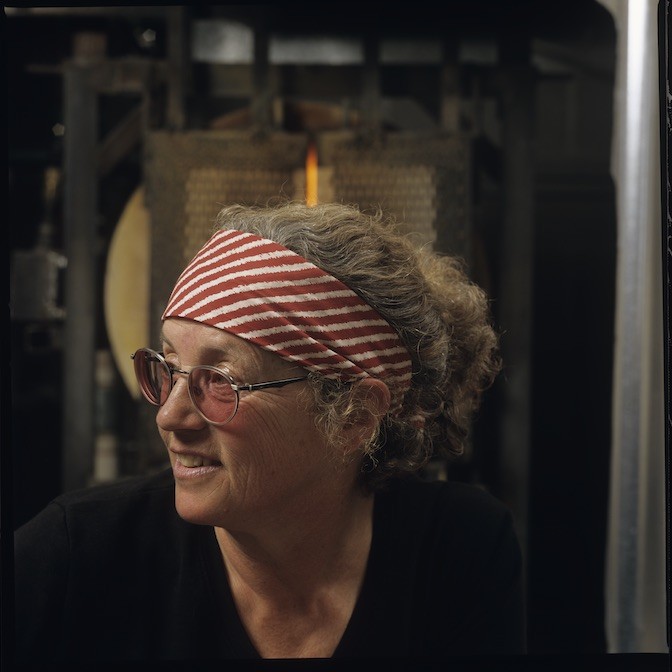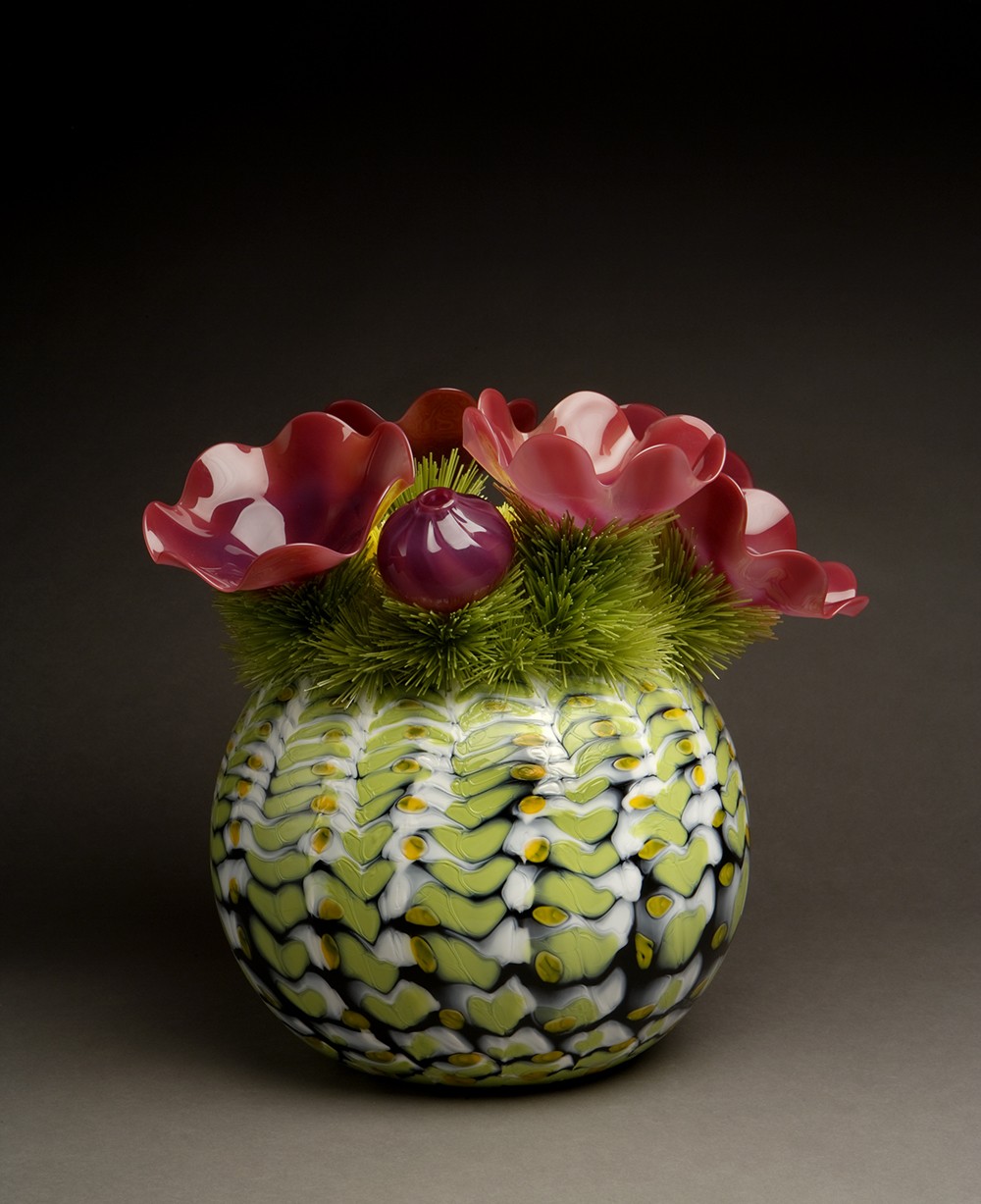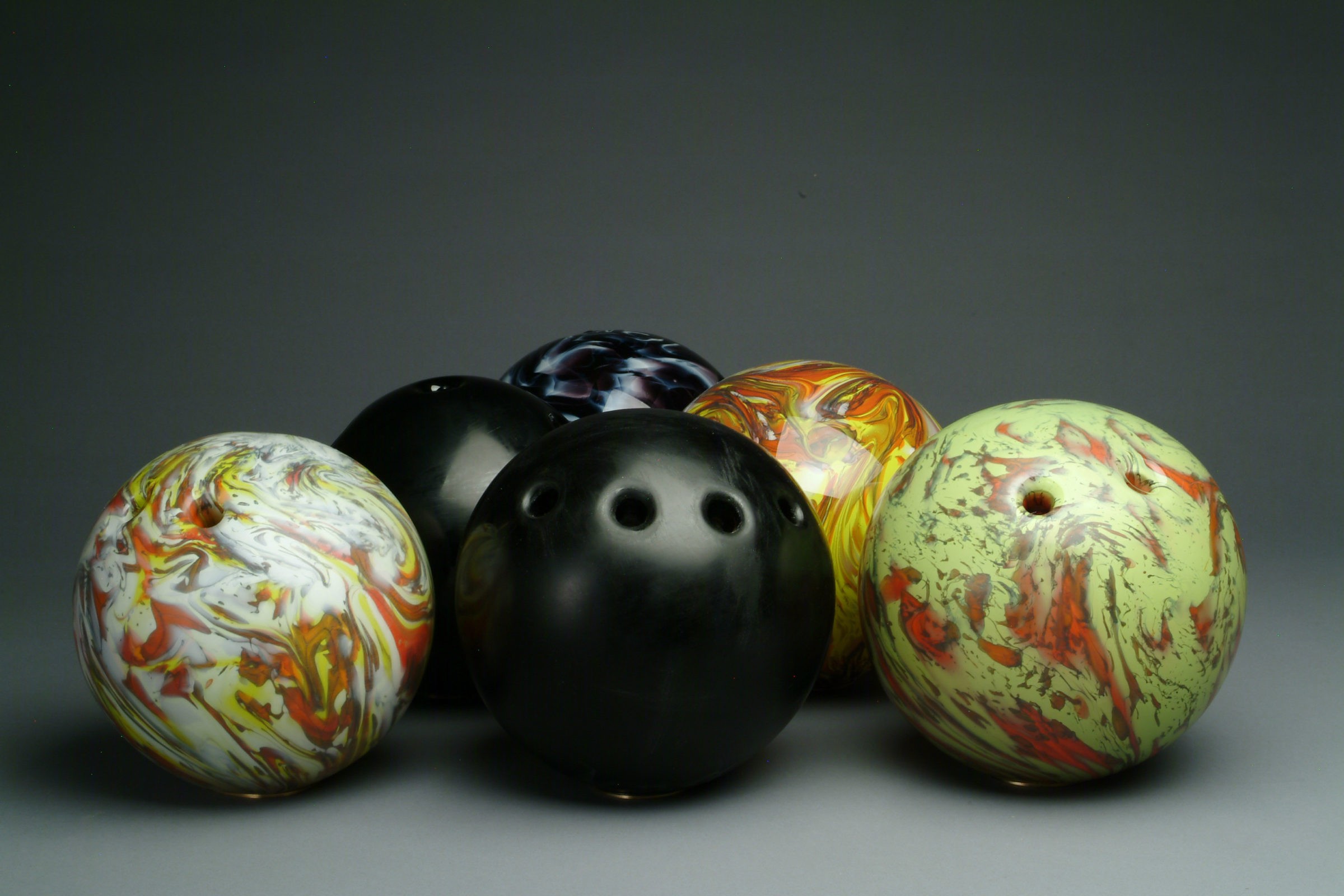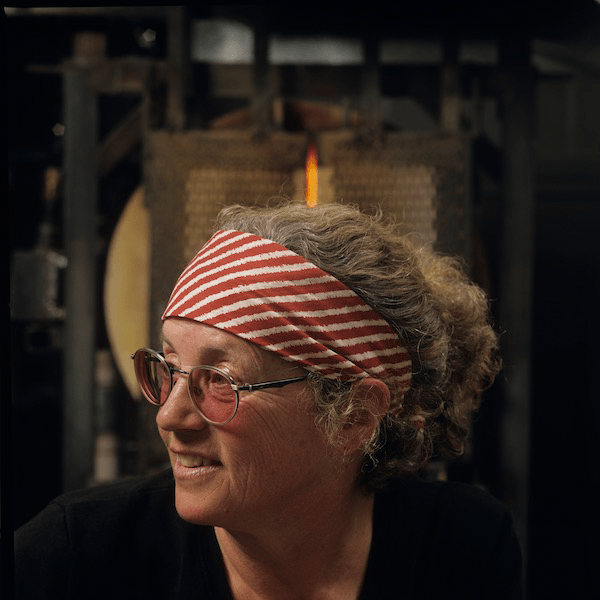
Image courtesy of Flo Perkins.
Flo Perkins
Artist Flo Perkins (1951– ) first studied ceramics at the Philadelphia College of Art (now University of the Arts) but discovered glassblowing the summer before receiving her BFA in 1974. That same year she attended Pilchuck Glass School. She worked for glassblower Dan Dailey at Massachusetts College of Art and Design in Boston, before going on to earn her MFA in glass under Richard Marquis at the University of California, Los Angeles, in 1981. In 1983, Perkins started her own glass studio in Pojoaque, New Mexico, which she ran until retiring in 2010 and donating the studio to the Institute of American Indian Arts in Santa Fe. Perkins is known for whimsical, large blown-glass works, many that incorporate elements of the Southwestern landscape, such as cacti and other botanical forms. She spent the last years of her career experimenting with “urban” forms that translate well into blown glass, including bowling balls and traffic cones.
Works

Diva, 2008. Blown glass, fabricated. H: 17 in, D: 21 in. Image courtesy of Flo Perkins.

Bowling Balls, 2004. Blown glass. Diam: 9 in (each). Image courtesy of Flo Perkins.

Desert Plankton, 1987. Glass and steel. H: 14 in, W: 6 in. Image courtesy of Flo Perkins.

Flo Perkins talks about going to Pilchuck, Mass Art, and then UCLA with Dick Marquis.
02:10 TranscriptFlo Perkins discusses the history of studio glass artists working for Venini and her time there in later years.
2:54 TranscriptFlo Perkins discusses a letter she got from Dale Chihuly encouraging her to come to Pilchuck.
00:21 TranscriptFlo Perkins talks about taking her bicycle on a train across Canada to meet Dale Chihuly.
00:20 TranscriptFlo Perkins discusses the spining technique she first used at UCLA for her “Earthquake ware.”
01:35 Transcript